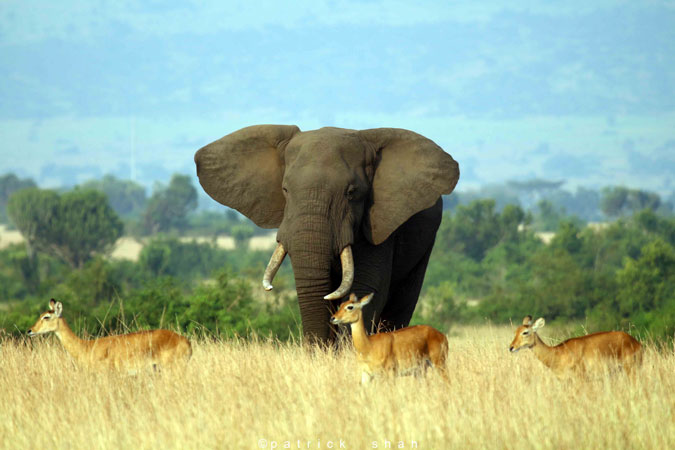Queen Elizabeth National Park is Uganda’s most popular savannah reserve and has the widest variety of wildlife of any Ugandan park. The variety of habitats includes grassland savannah, forests, wetlands and lakes. This provides the setting for an extensive range of large mammals and primates. Four of the Big Five are present (rhino are absent) and chimp tracking is available.
Top wildlife viewing
Boat trips on Kazinga Channel available
Tree-climbing lions in the Ishasha sector
Chimp trekking available
Excellent birding with 600 species recorded
The Mweya peninsula area can get busy in high season
Main road bisects the park and people live along the boundaries.
Wildlife
This is the most reliable park in Uganda for lion, which is particularly common on the grassy Kasenyi Plains, but is more famous for its tree-climbing antics in the Ishasha sector. Huge herds of buffalo and elephant are found in the savannah areas of the park, and an amazing number of hippo inhabit the Kazinga Channel on which daily boat trips are conducted.
Scenery
The park is set against a backdrop of the Rwenzori Mountains. Additional scenic points are Kazinga Channel between Lake Edward and Lake George and at least 10 crater lakes. The most accessible part of the park is open savannah, but large forest areas are open to the public. These include the forested Kyambura Gorge and the extensive Maramagambo forest in the southeast.
Weather & Climate
Queen Elizabeth National Park’s nearness to the equator ensures uniformly warm temperatures throughout the year. Heavy rain that makes some roads impassable is a feature of the region’s two Wet seasons (March to May and August to December). Although there’s no official Dry season, the rainfall decreases somewhat – though rarely entirely – from January to February and June to July.
More about the weather and climate
Best Time To Visit
Brief but drenching rainstorms often characterize the days of the Wet seasons (March to May and August to December), but this is also when the park’s environment is beautifully lush and you can greet migratory birds as they pass through. For chimpanzee trekking, though, visit when the park’s trails are more solid underfoot in the drier months.



